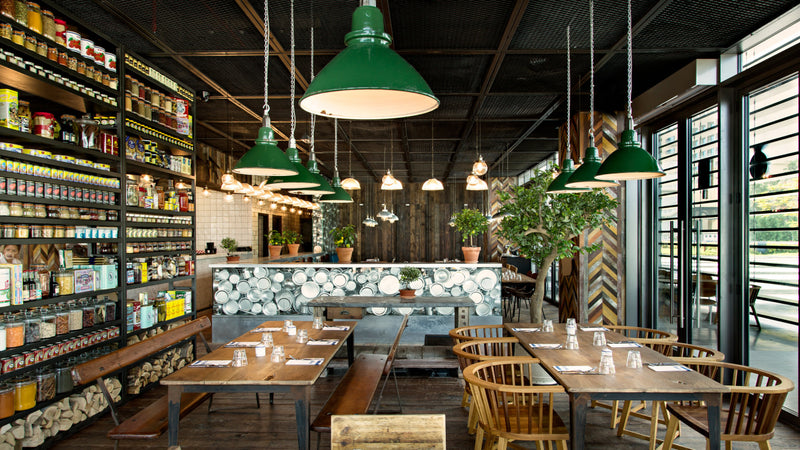
The results of the skinflint Carbon Audit 2019
At the start of September 2019, skinflint declared a climate emergency. As part of this, one of our aims is to encourage governments and other organisations to introduce policies and actions to ensure the UK as a country is carbon neutral by 2025.
At skinflint we think the best way to do this is to lead by example, and as part of our climate emergency declaration and company carbon audit, we have pledged to become a carbon-neutral business as soon as possible, and at the latest by 2025.
As part of this, we decided to conduct our own company carbon audit. Unlike large corporations, carrying out a carbon audit for a small business like skinflint is a voluntary decision. So to assist us, we commissioned and conducted an independent GHG (greenhouse gas emissions) Report. As many of us are on this journey to becoming carbon neutral together, and because as yet no one has all the answers, we will openly share our findings and discuss the ways in which are striving to improve, as well as sharing steps we can all take to reduce our carbon footprint. We intend to take full responsibility for our carbon footprint and will not engage in a ‘greenwashing’ attempt to make our company emissions appear lower than they are.
The results of our GHG Report
Our company emissions from the period January to December 2018 equate to 16.1 tonnes of carbon dioxide equivalent emissions (tC02e), a “very low per capita footprint for a UK retail company”. This roughly translates to 2 tonnes per employee. In addition, the “embodied carbon of our products is very low because they are being reused and brought into the circular economy rather than going for disposal or recycling.” The bulk of our carbon footprint (70%) comes from scope 1 emissions from diesel fuel used in transport operations (we’ll explain more about what the ‘scopes’ are later in this piece). Of the remainder, 17% is due to indirect scope 2 emissions from the use of grid electricity used to power our lighting displays and electrical equipment in the showroom and workshop.
What are scope 1, 2 and 3 emissions?
Greenhouse gas emissions are categorised into three categories or ‘scopes’ by the most widely-used accounting tool, the Greenhouse Gas (GHG) Protocol, which this report uses. Scope 1 emissions are those produced ‘in-house’ by the company. Scope 2 is purchased electricity and heat. Scope 3 is what happens outside our business, including purchased goods and services as well, transportation and distribution, business travel and employee commuting.
Scope 3 emissions - those emitted indirectly by sources not owned the company - are currently very difficult to calculate, and reporting of these as part of the GHG report is voluntary. Like other companies at this early stage of their carbon-neutral journey, scope 3 emissions have not not been included in our report, although we are aiming to include elements such as business travel in reports moving forwards. In addition, in 2019 we pledged to use the UK and European rail network rather than flying for our travel wherever possible.

Becoming carbon neutral
Carbon neutrality is achieved by measuring the carbon footprint of an organisation, as we’ve done here, then reducing and replacing wherever possible through rigorous examination of company practices. Whatever is leftover is then offset through a third party. For the 2018 reporting year, we have more than fully offset our carbon footprint by supporting emission removal projects totaling 17 tonnes of C02e. We have selected a range of projects covering local tree-planting projects in the UK via the Woodland Trust, a solar power project at Bhadla in Rajasthan, India, administered by the Gold Standard Voluntary Emission Reductions scheme, and finally and the Quilleco Hydroelectric Project in Chilli via the United Nations Carbon Offset Platform.
Our target
As a business, our target is to work even harder. We plan to reduce emissions by 25% year on year and to continue to monitor, measure and implement the carbon management hierarchy (avoid, reduce, replace, offset) to reduce impact and adopt new carbon-neutral technology wherever possible.
Our pledges
Building on our existing sustainability policy, this is what we pledge to do:
- The most significant source of company emissions comes from business transport. With this in mind we are currently looking at options to switch our company van to more sustainable battery electric vehicles. In the interim, we make business journeys only when necessary - and will continue to do this even when we have an electric vehicle.
- Although gas is used to heat our buildings, electricity usage is very low and well managed through procedures such as turning off equipment when not in use and ensuring computer monitors use a low energy screen saver when not in use for longer than five minutes. Like the lights we restore and sell, all of our lighting in our studio and workshop uses energy-efficient LED bulbs.
- We have already switched one of our three utility contracts to a 100% green tariff with one of our electrical supplies now coming through Good Energy. We plan to switch our second electrical supply to a similar green tariff when this expires in June 2020. Our gas supply will also switch to Good Energy in March 2020. In the future hope to run our business via solar energy.
- We are actively reviewing our supply chain’s environmental policies with a view of partnering exclusively with businesses that share our vision of becoming carbon-neutral, including businesses that are plastic-free.
- In an effort to reduce the environmental impact of our packaging, we already utilise single-wall cardboard boxes that are stronger and lighter than double-wall equivalents. In a bid to improve things further, we are currently undertaking a review of all of our packaging components with a view to switching to more sustainable options wherever possible whilst offering our customers information about best recycling practice.
- We encourage our employees to use Ecosia as a search engine for all web-based searches.
You might also like
Creative ways with vintage enamel pendant lights
The skinflint team share their favourite ways to get creative with the vintage classic - from hanging at asymmetric heights, to playing with different flex colours, suspension methods and more.
Lighting adviceOur top 5 circular economy initiatives
It’s been 12 months since our Full Circle product buy-back scheme launched - and we’ve been blown away with the response. Feeling inspired, we share our favourite innovative companies using circular initiatives to change the way we think, use and consume.
SustainabilityJoin us at Heal’s Festival of Light
Showcasing an exciting collection of new vintage lighting finds, online and in-store at Heal's Festival of Light this 11-31 October.
News







